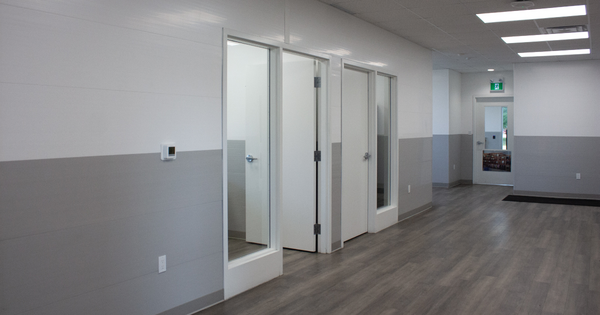In an age of increasing climate-related disasters, resilient construction plays a critical role in building structures that can withstand natural hazards. In this article, we dive into the principles, challenges, and strategies of resilient construction, shedding light on how architects, contractors, and stakeholders can build more resilient environments.
What is Resilient Construction?
Resilient construction means building structures that can handle natural disasters and man-made hazards like earthquakes, storms, floods, and climate change-related events. It involves using materials and techniques that can absorb shock, spread forces evenly, and installing durable, weather-resistant materials.
The goal of resilient construction is simple: to create buildings and infrastructure that can bounce back after facing tough challenges. Architects and contractors play a critical role in implementing resilient design principles and construction practices to protect communities, minimize property damage, and boost the resilience of the built environment against an uncertain future. More on that next.
The Role of Architects and Contractors in Creating Resilient Structures
Architects design buildings, considering factors like location, function, and appearance. In resilient construction, they also select materials and techniques that make buildings strong and flexible against natural disasters.
Contractors, on the other hand, bring those designs to life. They handle everything from site preparation to finishing touches, ensuring the architect's resilient design is accurately executed. Collaboration between architects and contractors is crucial, ensuring resilient principles are integrated throughout a project. By working together and staying updated on best practices, they create buildings that can withstand various challenges and contribute to community resilience.
The Threat of Natural Disasters to Buildings and Infrastructure
Natural disasters bring a host of challenges and threats to buildings and infrastructure:
- Earthquakes can cause structural damage and building collapse, especially in structures that aren’t designed to handle ground motion.
- Climate change-related events, like rising temperatures and extreme weather, pose risks such as heat stress, storms, and coastal erosion, all of which can damage buildings and surrounding infrastructure.
- Storms, including hurricanes and tornadoes, can rip off roofs and topple structures.
- Flooding can lead to water damage, mold growth, and instability in buildings and infrastructure, disrupting transportation and utilities.
Overall, natural disasters pose threats like structural damage, water damage, service disruptions, and loss of life, requiring a comprehensive approach to resilience.



Resilient Construction Principles & Strategies
Resilient construction relies on key principles and strategies to withstand and recover from natural disasters and hazards. Let's break down these elements:
- Building Codes and Standards Compliance: Following building codes and standards is essential to ensure that structures are designed and built to withstand expected hazards. These codes often include requirements for seismic design, wind resistance, floodplain management, and structural integrity.
- Site Selection and Land Use Planning: Selecting suitable construction sites reduces risks associated with natural hazards. Avoiding flood-prone areas, choosing stable ground for building foundations, and considering factors like slope stability and soil type can help decrease a building’s vulnerability to disasters.
- Structural Design Considerations: Resilient structural design involves adding features like strong framing systems, flexible connections, and reinforced elements to withstand forces from earthquakes, high winds, and other hazards. Techniques such as base isolation and structural damping can also boost resilience.
- Material Selection and Durability: Choosing durable materials capable of enduring harsh environmental conditions is crucial for resilient construction. Materials should resist moisture, corrosion, and decay while maintaining structural integrity over time. Additionally, opting for locally sourced and sustainable materials can enhance long-term resilience.
- Integration of Passive Design Features for Energy Efficiency and Climate Resilience: Passive design strategies like proper orientation, natural ventilation, and shading devices can enhance energy efficiency and climate resilience without heavy reliance on mechanical systems. These features help regulate indoor temperatures, reduce energy consumption, and improve occupant comfort, especially during extreme weather events.
- Incorporation of Resilient Infrastructure Systems: Resilient infrastructure systems, including drainage networks, water management systems, and utilities, are crucial for supporting the resilience of buildings and communities. Incorporating features like green infrastructure, decentralized water treatment, and redundant power sources can strengthen critical infrastructure and minimize vulnerabilities to disruptions.
By incorporating these principles and strategies into the design, construction, and maintenance of buildings and infrastructure, architects and contractors can create resilient built environments that are better equipped to withstand the challenges posed by natural disasters, climate change, and other hazards.
Design Strategies for Seismic Resilience
Seismic design principles and technologies play an important role in ensuring that buildings can withstand earthquakes and minimize the risk of structural damage and collapse. Here are some key strategies:
- Base Isolation: Base isolation means separating the building from the ground using isolation bearings or similar devices. This lets the building move independently during an earthquake, reducing the seismic forces transferred to the structure. Base isolation effectively shields the building from ground shaking, making it more resilient to earthquakes.
- Structural Damping: Structural damping is about a building's ability to absorb energy during seismic events. Damping devices like tuned mass dampers or viscous dampers are added to the building's structure to soak up and disperse seismic energy. This lessens vibrations and lowers structural damage by stabilizing the building.
- Energy Dissipation Systems: Energy dissipation systems, such as hysteretic dampers or friction dampers, are integrated into the building's structure to soak up and release seismic energy. Placed strategically in high-seismic areas like building joints, these devices lessen earthquake-induced forces and minimize structural deformation during seismic events.
- Flexible Structure Systems: Flexible structural systems, like moment-resisting frames or eccentrically braced frames, are designed to bend and flex under seismic pressure. This controlled movement during an earthquake disperses seismic energy, preventing sudden failure. By distributing forces and accommodating movement, flexible structure systems enhance the building's ability to withstand seismic forces and minimize damage.
Design Strategies for Climate Change Adaptation
Architects and contractors employ various design strategies to help buildings adapt to changing climate conditions, including rising temperatures, extreme weather events, and sea-level rise. Here are some key strategies in use today:
- Natural Ventilation: Designing buildings with natural ventilation systems allows for passive cooling and better indoor air quality, cutting down on mechanical cooling and reducing energy use. Architects can include features like operable windows, atria, and courtyards to encourage cross-ventilation and airflow. Contractors ensure proper installation and operation of these systems for comfortable indoor environments.
- Solar Shading: Using solar shading devices such as overhangs, louvers, and awnings helps decrease solar heat and glare, enhancing thermal comfort and energy efficiency. Architects orient buildings carefully and integrate shading elements to minimize direct sunlight exposure during peak hours. Contractors install shading devices with durable materials, ensuring they're sized and positioned effectively to shield against solar radiation.
- Water Management: Sustainable water management practices like rainwater harvesting, stormwater retention, and greywater recycling can mitigate climate change-related water scarcity and flooding impacts. Architects design buildings with green roofs, permeable paving, and rain gardens to absorb and manage onsite stormwater runoff. Contractors install water management systems that collect and store rainwater for non-potable uses like irrigation and toilet flushing, lessening reliance on municipal water and reducing strain on drainage infrastructure. acement considerations into account, you can maximize the effectiveness and efficiency of your dehumidifier, creating a more comfortable and conducive environment in your garage.
Design Strategies for Storm Resilience
Designing buildings to minimize damage from high winds, heavy rain, and storm surges requires a combination of construction techniques and resilient design features. Here are some key strategies for storm resilience:
- Reinforced Roofing: Using stronger roofing materials and construction methods can prevent roof damage and uplift during high-wind events like hurricanes and tornadoes. Architects and contractors can use hurricane straps, roof trusses, and impact-resistant roofing materials to bolster the roof structure and increase its resistance to wind uplift forces.
- Impact-Resistant Windows and Doors: Installing windows and doors that can withstand impacts helps shield buildings from wind-borne debris and reduces damage during severe storms. These specially designed windows and doors maintain their structural integrity even under extreme conditions. Additionally, using laminated glass and reinforced frames further strengthens windows and doors against wind pressure and water infiltration.
- Elevation Techniques for Flood-Prone Areas: Raising buildings above the base flood elevation in flood-prone areas lowers the risk of flood damage and lessens the impact of storm surges. Architects can design buildings with elevated foundations, raised floor levels, and flood-resistant materials to mitigate flooding effects and ensure habitable space remains above floodwaters. Contractors can install proper grading and drainage systems around the building perimeter to divert stormwater runoff and prevent water intrusion.
- Wind-Resistant Structural Design: Designing buildings with wind-resistant structural systems, like reinforced concrete or steel frames, enhances their ability to endure high winds and dynamic loads. Architects and engineers can integrate features such as diagonal bracing, shear walls, and moment-resisting frames to provide lateral stability and withstand wind-induced forces. Additionally, designing buildings with aerodynamic shapes and smooth facades helps reduce wind pressure and turbulence, further boosting resilience to wind damage.
Design Strategies for Flood Resilience
Architects and contractors can employ various strategies to mitigate flood risks and allow for faster recovery times in the event of flooding. Here are some key approaches:
- Proper Site Elevation: Raising the building site above the base flood level is a highly effective way to lessen flood risks. Architects should carefully evaluate site conditions and local floodplain maps to determine the ideal elevation for the building. Contractors can then employ proper site grading and foundation design to ensure that the finished floor level remains above potential floodwaters. Techniques like building on raised piers or using fill material can elevate the structure and decrease the risk of flood damage.
- Flood-Resistant Materials: Selecting flood-resistant materials for construction significantly reduces the impact of flooding and simplifies cleanup and restoration efforts. Architects can specify materials such as concrete, metal, fiberglass, and polyvinyl chloride (PVC) that are less prone to water damage and mold growth. For interior finishes, for example, architects can substitute traditional drywall with PVC wall and ceiling panels like Trusscore Wall&CeilingBoard. Trusscore panels are non-porous, 100% waterproof, and will never grow mold or mildew. Since they won’t absorb water, they can withstand long-term exposure to flood water without ever showing signs of damage. Plus, they can easily be cleaned and disinfected with soap and water or with high-strength chemical cleaners. There’s no need for costly post-flood repairs or replacements.
- Water-Resistant Construction Techniques: Employing water-resistant construction techniques helps prevent water intrusion and safeguards building components from flood damage. Contractors can use methods like waterproofing membranes, sealants, and flashing to create a watertight building envelope that repels moisture and prevents leaks. Installing flood barriers such as flood doors or gates at vulnerable entry points further reduces the risk of water ingress during flood events.
- Dry and Wet Floodproofing: Dry floodproofing involves retrofitting existing buildings with flood-resistant features to keep floodwaters out, like sealing foundation walls, installing flood barriers around doors and windows, or installing products like Trusscore Wall&CeilingBoard on top of existing drywall. Wet floodproofing, on the other hand, involves designing buildings to safely accommodate floodwaters, employing flood-resistant materials and allowing for easy drainage and cleanup. Architects and contractors should assess the most suitable floodproofing measures based on site conditions, building type, and flood risk level.

Challenges of Resilient Construction
Despite advancements in resilient construction practices, several ongoing challenges exist in the field, including:
- Cost: Resilient construction often involves higher initial expenses compared to traditional methods. While these features can cut down long-term maintenance costs and minimize disaster impacts, the upfront investment might deter some developers and homeowners.
- Limited Awareness and Education: Many architects, contractors, and building owners lack a full understanding of resilient construction principles and benefits. Raising awareness and providing education about resilient design strategies, building codes, and standards are crucial for encouraging wider adoption of these practices.
- Complexity and Integration: Resilient construction demands a collaborative effort among architects, engineers, contractors, and stakeholders. Integrating resilient design into projects can be intricate, especially when juggling competing priorities like cost, aesthetics, and functionality.
- Regulatory and Policy Barriers: Outdated building codes and regulatory barriers sometimes obstruct the implementation of resilient construction practices. Updating codes and standards to reflect current climate risks and resilience strategies is necessary to ensure buildings are adequately shielded against natural hazards.
- Resource Constraints: Access to materials, skilled labor, and technical expertise may be limited in certain regions, especially in developing countries or rural areas. Overcoming resource constraints and enhancing capacity for resilient construction practices is vital for promoting resilience in vulnerable communities.
- Climate Uncertainty: The rising frequency and intensity of extreme weather events due to climate change presents challenges for resilient construction. Designing buildings to withstand unpredictable future climate conditions requires careful consideration of evolving risks and adaptation strategies.
- Maintenance and Retrofitting: Sustaining the long-term resilience of buildings requires ongoing maintenance, monitoring, and periodic retrofitting to address changing hazards and vulnerabilities. Building owners and managers must allocate resources for regular inspections, repairs, and upgrades to maintain the effectiveness of resilient features over time.
Addressing these ongoing challenges requires concerted efforts from the construction industry, policymakers, researchers, and communities to promote resilient construction practices and build more resilient built environments. By overcoming these challenges, we can create buildings and infrastructure that are better equipped to withstand the impacts of natural hazards and contribute to the overall resilience and sustainability of communities.






